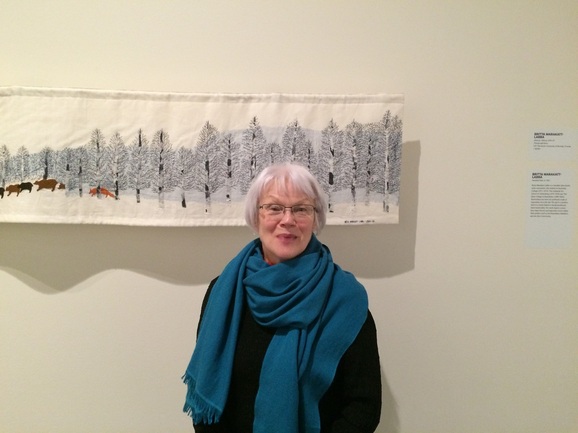
Despite your preconceptions about Anchorage, Alaska -- whether or not you have had the opportunity to visit here -- just know this: we have a world class museum. And if you ever make it up this way, or up this way again, go. to. it.
"Sami Stories" is a recent exhibition that has traveled here from Tromso, Norway (with a stop in New York at Skandinavia House) and was curated by Charis Gullickson from the Northern Norway Art Museum. The show features historical objects as well as work from 8 Sami artists, 2 of which traveled to Alaska for a symposium at the University of Alaska Anchorage, a panel discussion at the museum and a gallery tour this last weekend. I attended the 2 latter events.
The Sami (pronounced SAH-mee, not SAMMY like I heard many visitors pronouncing it) are the indigenous people of northern Norway, Sweden, Finland and the Kola Peninsula of Russia. In the past, they have been referred to as "Lapps," (perhaps you've heard of "Lapland"), however they do not call themselves this as the "lapp" in question refers to a piece of cloth for mending and was a name imposed upon them. They have never had their own country (which "Lapland" sort of implies), instead are citizens of whichever country's borders they live within. In 1989, a Sami Parliament was implemented in Norway -- a landmark event that has done much to strengthen and validate their voice. Their connection to the land is deep and vital, referring to it as Sapmi or Same. Many of them still make their livelihood through reindeer husbandry, although this is swiftly shifting due to environmental changes and an ever-shrinking landscape. The fight to preserve their language is fierce, despite the fact that only about 30,000 people use it.*
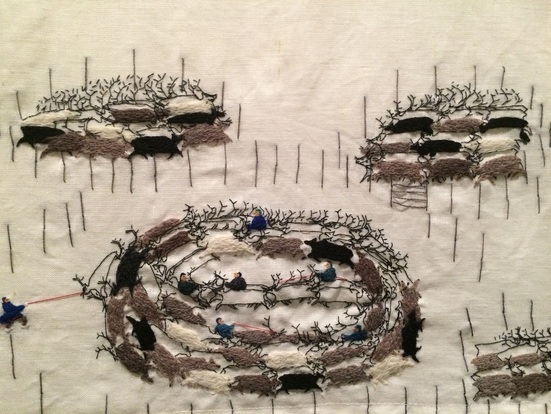
Britta Marakatt-Labba, "Historja," detail 2003-07.
I was thrilled to meet one of the visiting artists from Sweden, Britta Marakatt-Labba, and she indulged my broken Swedish for quite some time. My mother always used to talk about the Sami, but although she grew up in Sweden I think their culture was a mystery to her. She left in 1965, well before the Sami Act was passed in Norway in 1987 with a new constitutional paragraph added in 1988:
"It is the responsibility of the authorities of the State to create conditions enabling the Sami people to preserve and develop its language, culture and way of life." (The Norwegian Constitution, Skogvang 2009:179-194).
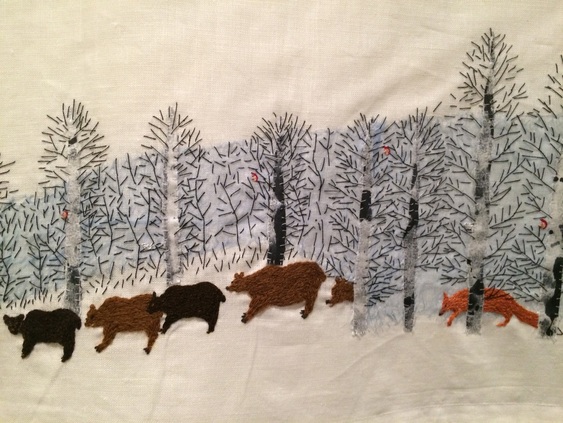
Britta Marakatt-Labba, "Historja," detail 2003-07.
Britta Marakatt-Labba is a textile artist and painter. She studied at Sunderby College, The Industrial Art School of Gothenburg and the Sami College in Kautokeino. Her work is part of the collections of the Swedish Parliament, The Sami Collections in Karasjok, The Sami Parliament of Norway, The University of Tromso, SpareBank 1 Nord-Norge's Art Foundation and the Northern Norway Art Museum.* Two of Britta's pieces were featured in the exhibit -- embroideries on white linen -- which depict both historical, political and mythological components while holding fast to the traditional duodji, or traditional Sami handicrafts.
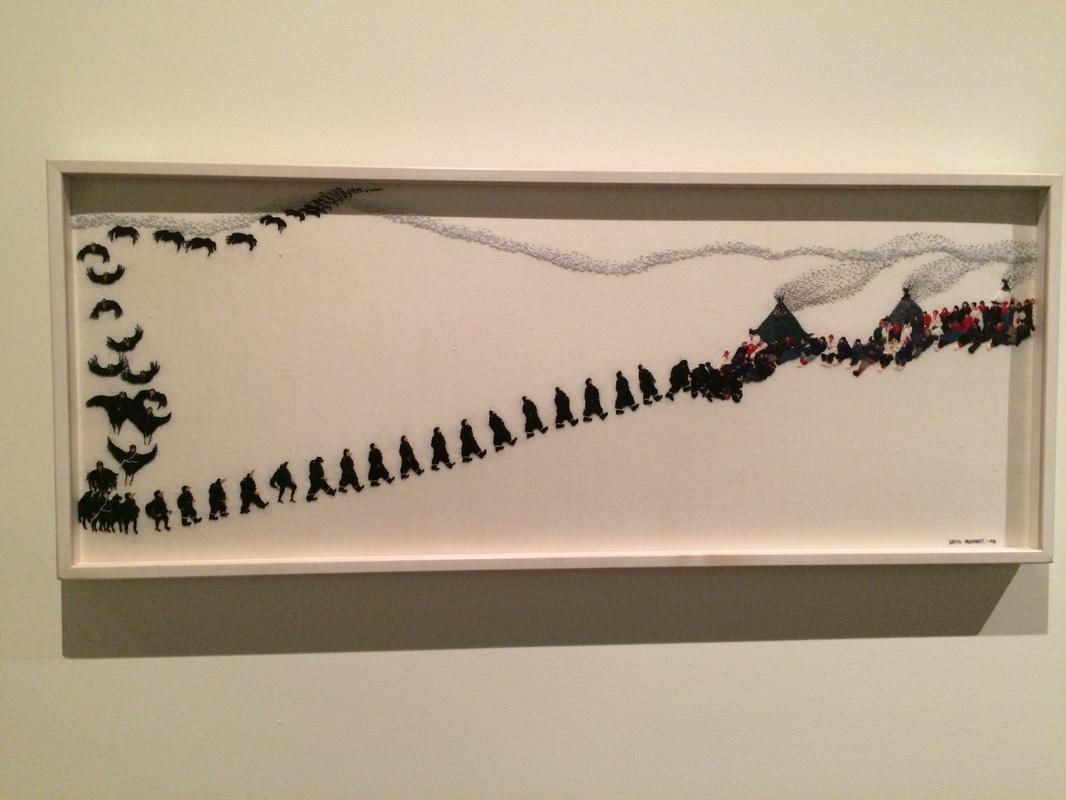
Britta Marakatt-Labba, "Garjjat," The Crows, (23.6" x 32.7") 1981.
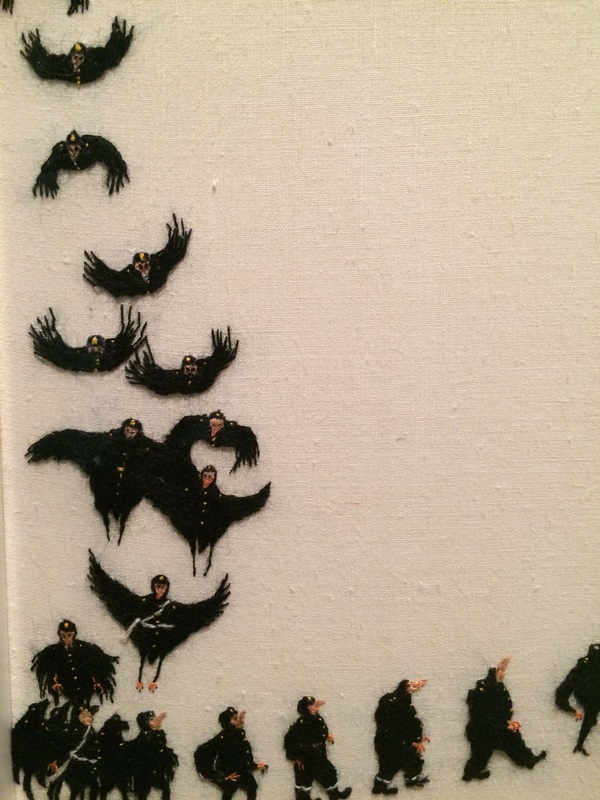
Britta Marakatt-Labba, "Garjjat," The Crows, detail 1981.
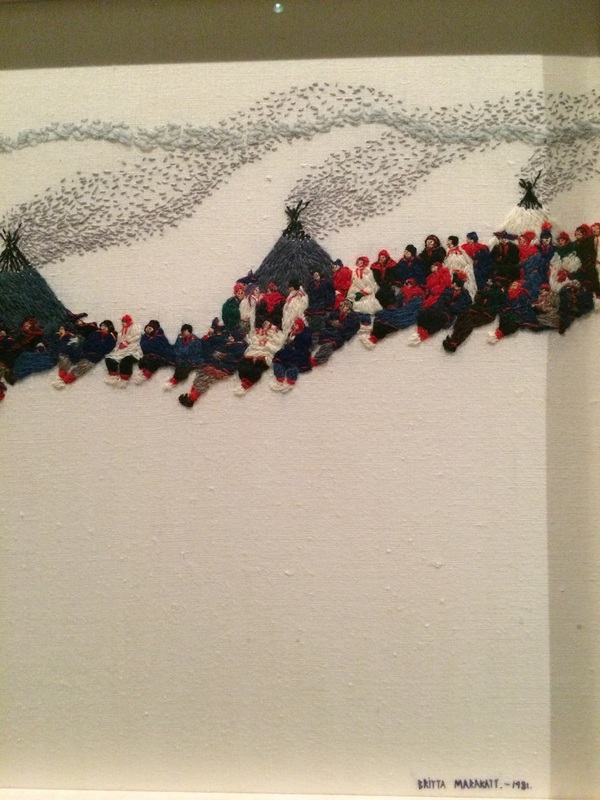
Britta Marakatt-Labba, "Garjjat," The Crows, detail 1981.
Garjjat, depicts the Alta Conflict in Sami and Norwegian history, featuring crows descending on the protestors and morphing into policemen.
The second piece (on loan from the University of Tromso in Norway) is a 78-foot long linen embroidered tapestry, Historja ("History"), which took four years to complete. My photos don't do it justice, but I'll include a few here:
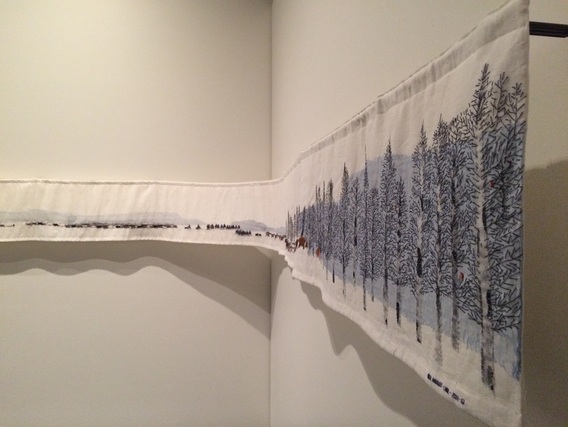
Britta Marakatt-Labba, "Historja," detail 2003-07.
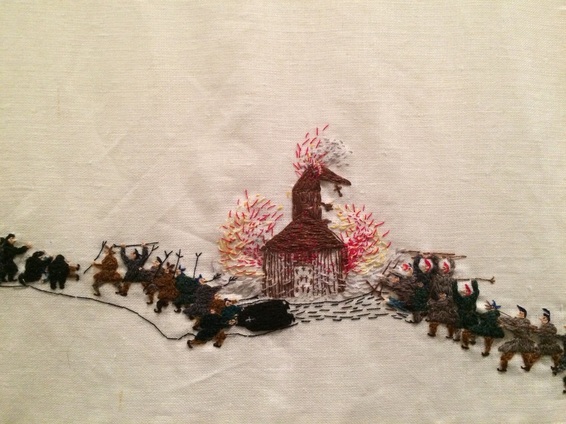
Britta Marakatt-Labba, "Historja," detail 2003-07.
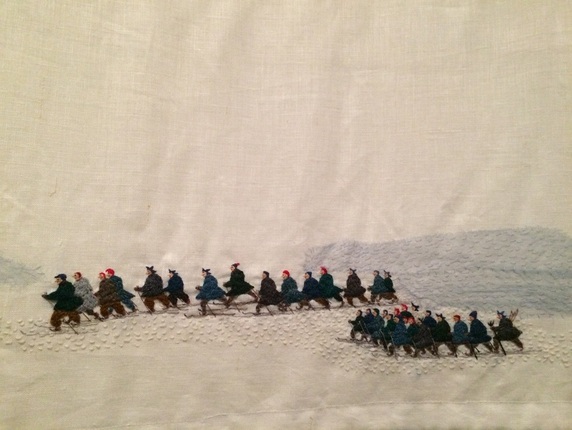
Britta Marakatt-Labba, "Historja," detail 2003-07.
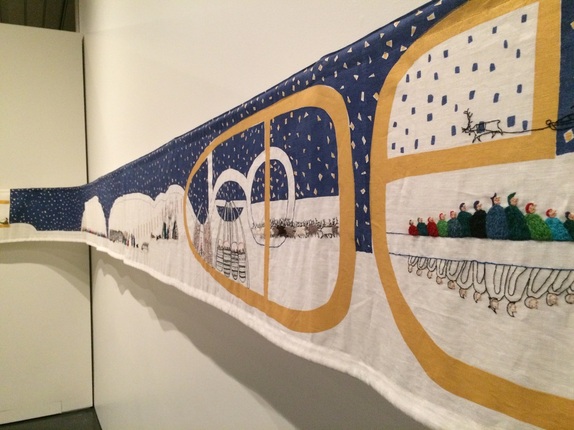
Britta Marakatt-Labba, "Historja," detail 2003-07.
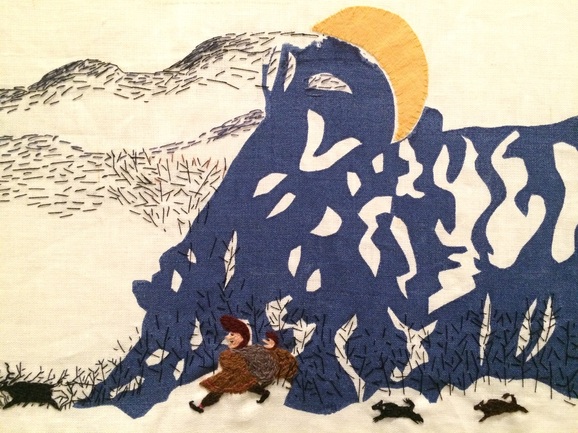
Britta Marakatt-Labba, "Historja," detail 2003-07.
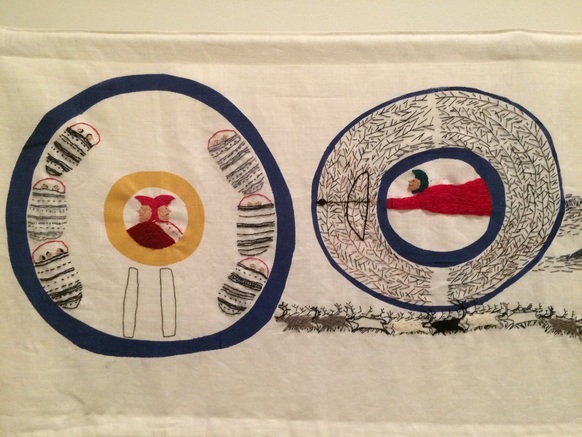
Britta Marakatt-Labba, "Historja," detail 2003-07.
This lady -- and her work -- blew me away. What an absolute honor to see this exhibit and to meet her in person.

*details gathered from the exhibition publication, Sami Stories: Art and Identity of an Arctic People, v. 1 & 2.
* * *
Here's another layer.
So, I'm not a TV person, but if you're interested in watching Jon Henrik, a Sami man walk out on a contemporary stage wearing traditional clothing that his "mamma made for him" and proceed to floor an audience singing a Sami joik that he wrote and composed, then you have to watch this clip (ummm ... can I just say he's gorgeous?). The joik is the traditional folk music of the Sami people -- often written to depict a person, or animal or the land -- and was forbidden in Sami schools as recently as the 1950s, considered sinful. Sigh. Of course.
It is powerful and haunting, not written about his friend who died, but as the embodiment of the friend. This is the spirit, the purpose of the joik.
And yes, Jon Henrik won this competition in 2014. Quite the soundtrack to the above images of Britta's work.
fonte: @edisonmariotti #edisonmariotti http://www.amymeissner.com/blog/sami-stories-in-alaska


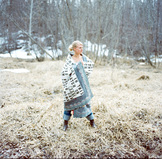
Nenhum comentário:
Postar um comentário